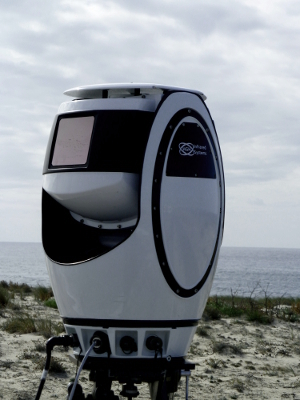Piracy Activity Drifts Towards SE Asian Waters

Since 2010, there has been a steadily increasing trend of piracy attacks in Southeast Asia, according to a report released by UNITAR (UN Institute for Training and Research), with 150 separate incidents just from last year alone. After significant strides in reducing the number of hijackings near war-torn Somalia over the past few years, the United Nations declared last month that the epicenter of piracy activity is now in waters off Singapore, Malaysia and Indonesia.
Considering that only two weeks ago the MT Oriental Glory, a Malaysian tanker carrying oil gas cargo, was hijacked in the South China Sea, it is an apparent and alarming verification that this report is already coming to fruition. The valuable cargo on board the MT Oriental Glory was stolen and the communication equipment and engine damaged before the pirates set the tanker adrift, luckily the crew remained unharmed. This incident follows another similar from last month, where a Singapore-managed tanker was also targeted and left damaged in the same waters. As Noel Choong, head of the International Maritime Bureau’s Kuala Lumpur Piracy Reporting Center told the AFP, “This is the ninth attack in these waters recently... It's a big concern," adding ships should be vigilant in the area so that pirates could not surprise them.
To combat against the threat of these vital shipping lanes in Southeast Asia once again becoming a piracy hub - an intelligent and proactive surveillance approach should be explored. One option is an integrated, panoramic, infrared thermal imaging surveillance system that is able to withstand the unpredictable nature of maritime environments. HGH Infrared Systems offers surveillance systems such as this, Spynel.
Spynel would assist large cargo vessels and other ships in these dangerous waters with its early detection and  long range surveillance capabilities. Spynel are unique in that they are the only thermal cameras that can provide a 360 degree wide field of view with a very high resolution and detection range (15 km for a RHIB) with no image distortion or stitching. They act like optical radars but can pick up targets that radar cannot detect. Objects like small wooden boats, RHIBs, swimmers, and skiffs up to the horizon. Ideal for ship-based maritime in the fight against piracy; Spynel cameras can successfully operate at sea state level 5/6 (rough to very rough seas) thanks to a gyro-stabilized platform. In addition to mechanical stabilization, Spynel come with a sea-specific image processing stabilization algorithm, allowing for minimal false alarms and effective differentiation between distant small boats and waves.
long range surveillance capabilities. Spynel are unique in that they are the only thermal cameras that can provide a 360 degree wide field of view with a very high resolution and detection range (15 km for a RHIB) with no image distortion or stitching. They act like optical radars but can pick up targets that radar cannot detect. Objects like small wooden boats, RHIBs, swimmers, and skiffs up to the horizon. Ideal for ship-based maritime in the fight against piracy; Spynel cameras can successfully operate at sea state level 5/6 (rough to very rough seas) thanks to a gyro-stabilized platform. In addition to mechanical stabilization, Spynel come with a sea-specific image processing stabilization algorithm, allowing for minimal false alarms and effective differentiation between distant small boats and waves.
Spynel systems have been deployed and proven in the maritime surveillance world since 2007. They are serving on multiple French Navy war frigates for ship-based anti-piracy missions in the Gulf of Aden. They are also used for panoramic surveillance at a high-risk port, as well as 24/7 surveillance for an offshore natural gas platform. The recent piracy threats in Southeast Asia have been a strong reminder that assets and goods can be most vulnerable when in transit on water, often miles from land or help. The need for and subsequent performance of Spynel have proven to be invaluable loss prevention agents in an ever increasing fight for security in these areas, and would effectively translate to the Southeast Asian waters.
The products and services herein described in this press release are not endorsed by The Maritime Executive.
